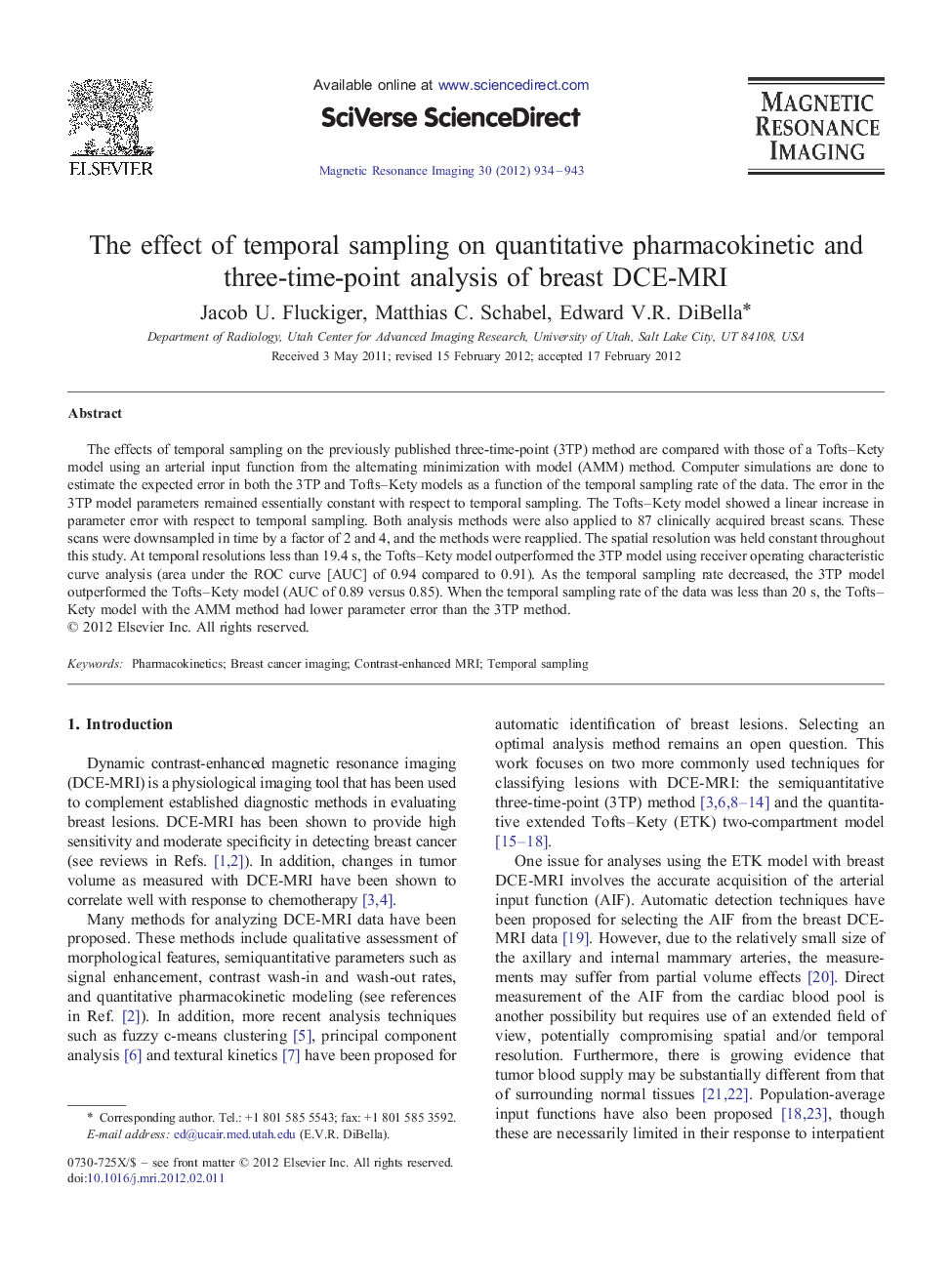| Article ID | Journal | Published Year | Pages | File Type |
|---|---|---|---|---|
| 1806928 | Magnetic Resonance Imaging | 2012 | 10 Pages |
The effects of temporal sampling on the previously published three-time-point (3TP) method are compared with those of a Tofts–Kety model using an arterial input function from the alternating minimization with model (AMM) method. Computer simulations are done to estimate the expected error in both the 3TP and Tofts–Kety models as a function of the temporal sampling rate of the data. The error in the 3TP model parameters remained essentially constant with respect to temporal sampling. The Tofts–Kety model showed a linear increase in parameter error with respect to temporal sampling. Both analysis methods were also applied to 87 clinically acquired breast scans. These scans were downsampled in time by a factor of 2 and 4, and the methods were reapplied. The spatial resolution was held constant throughout this study. At temporal resolutions less than 19.4 s, the Tofts–Kety model outperformed the 3TP model using receiver operating characteristic curve analysis (area under the ROC curve [AUC] of 0.94 compared to 0.91). As the temporal sampling rate decreased, the 3TP model outperformed the Tofts–Kety model (AUC of 0.89 versus 0.85). When the temporal sampling rate of the data was less than 20 s, the Tofts–Kety model with the AMM method had lower parameter error than the 3TP method.
